Summertime is the high time for flying.
One of my colleagues has got a Private Pilot Licence (PPL) and his own share of a light aircraft Diamond Star DA40-TDI. Which he offered us to fly.

It’s been my first, but hopefully not last, experience with this type of aircraft.
I have to say it’s a whole other world, with its customs, rules, jargon. For a layman like myself everything is new here.
Here are some technical specs of the plane to give you an impression of what it’s capable of:
- Capacity: 4 people (two pilot seats)
- Length: 26’ 5" (8.1 m)
- Wing-span: 39’ 2" (11.9 m)
- Height: 6’ 6"(2 m)
- Empty weight: 1,755 lb (795 kg)
- Max. takeoff weight: 2,645 lb (1200 kg)
- Max. useful load: 890 lb (403 kg)
- Cruise speed: 150 knots (173 mph, 279 km/h)
- Stall speed: 49 knots flaps down (56 mph, 91 km/h)
- Range: 720 nm (828 mi, 1341 km)
- Service ceiling: 16400 ft (5000 m)
- Rate of climb: 1120 ft/min (5.69 m/s)
Private aviation is quite an expensive hobby. That’s why my colleague shares this DA40 (built in 2008, i.e. seven years old now) with nine other people. So each of the ten has paid a 20,000 euros share to make up for the total price of two hundred thousand.
The aircraft identified as PH-PCA is dwelling at a small airport near the town of Lelystad in the northern part of the Netherlands.
The first strange thing you notice is the hangar, which is full of planes, is wide open on the runway side:

Since there’s usually no one there and all the aircrafts’ cockpits are unlocked, anyone can jump into any of them, start the engine and fly off. Just like Anakin Skywalker did in the Star Wars: The Phantom Menace.

Our winged friend PH-PCA is parked in the corner, blocked by other aeroplanes. In order to get to it, one has to roll a few others out first.

Weighing only eight hundred kilos, a DA40 can easily be moved by one person with the help of a brace that is attached to the front wheel:

A two-seater Diamond HK36 is even lighter, just half a ton:

The wing-span of DA40 is nearly 12 metres, therefore you have to be very cautious when moving it to not to hit anything with the wings. They are also fuel tanks, just like with regular passenger jets.

Our version of the aircraft was equipped with two big LCD screens by Garmin. They are not touch-sensitive and only controlled via buttons and knobs.

Right under the left screen there’s an autopilot module, strongly resembling a car radio.
See how it’s different from a conventional dashboard with a mechanical altimeter, compass, attitude indicator etc.:

Finally, our PH-PCA in the start position, the start-up sequence can be initiated:
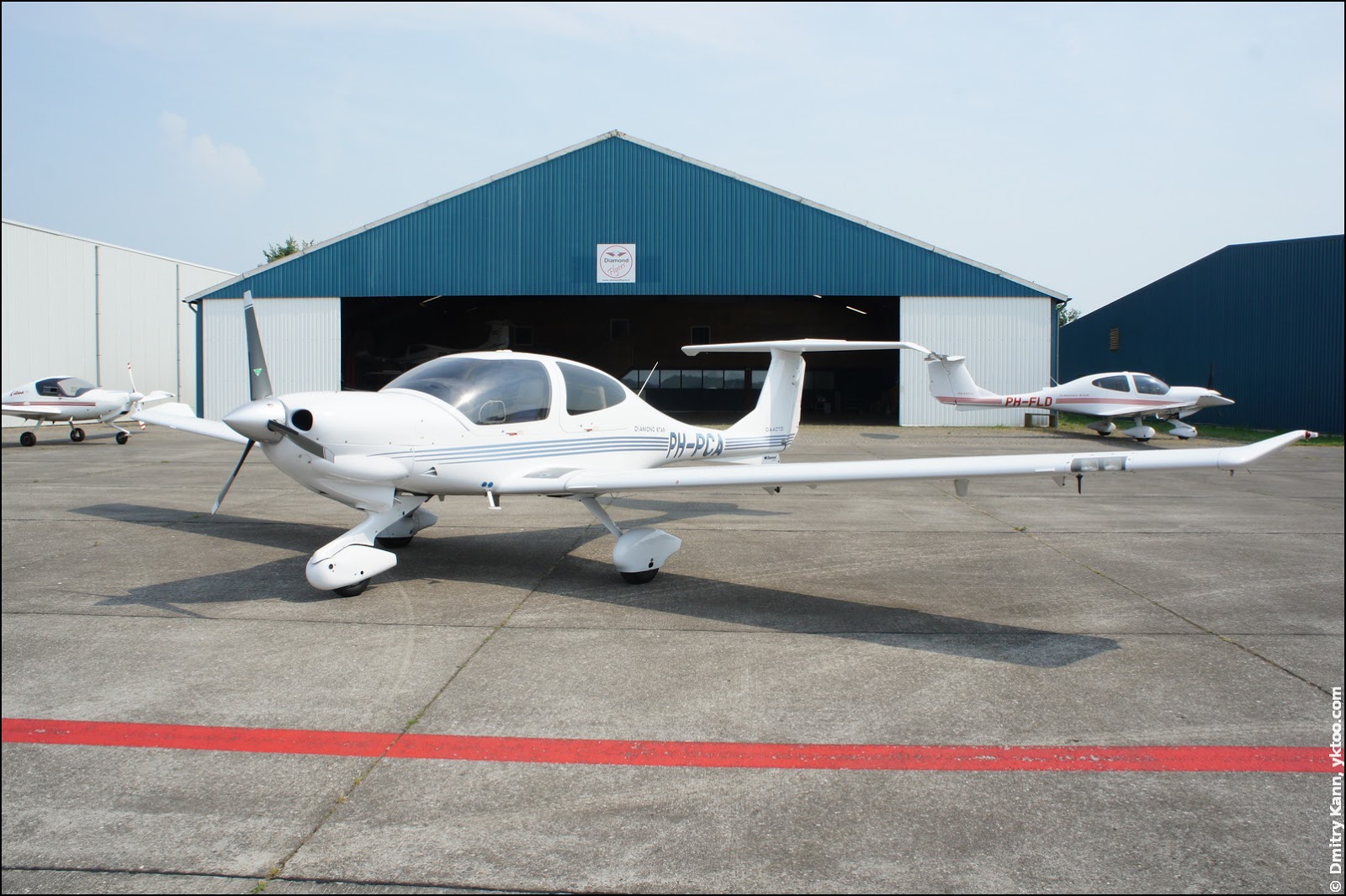
The ignition is triggered with a turn of the key: the engine starts and the propeller begins to spin. The pilot goes over the check-list.
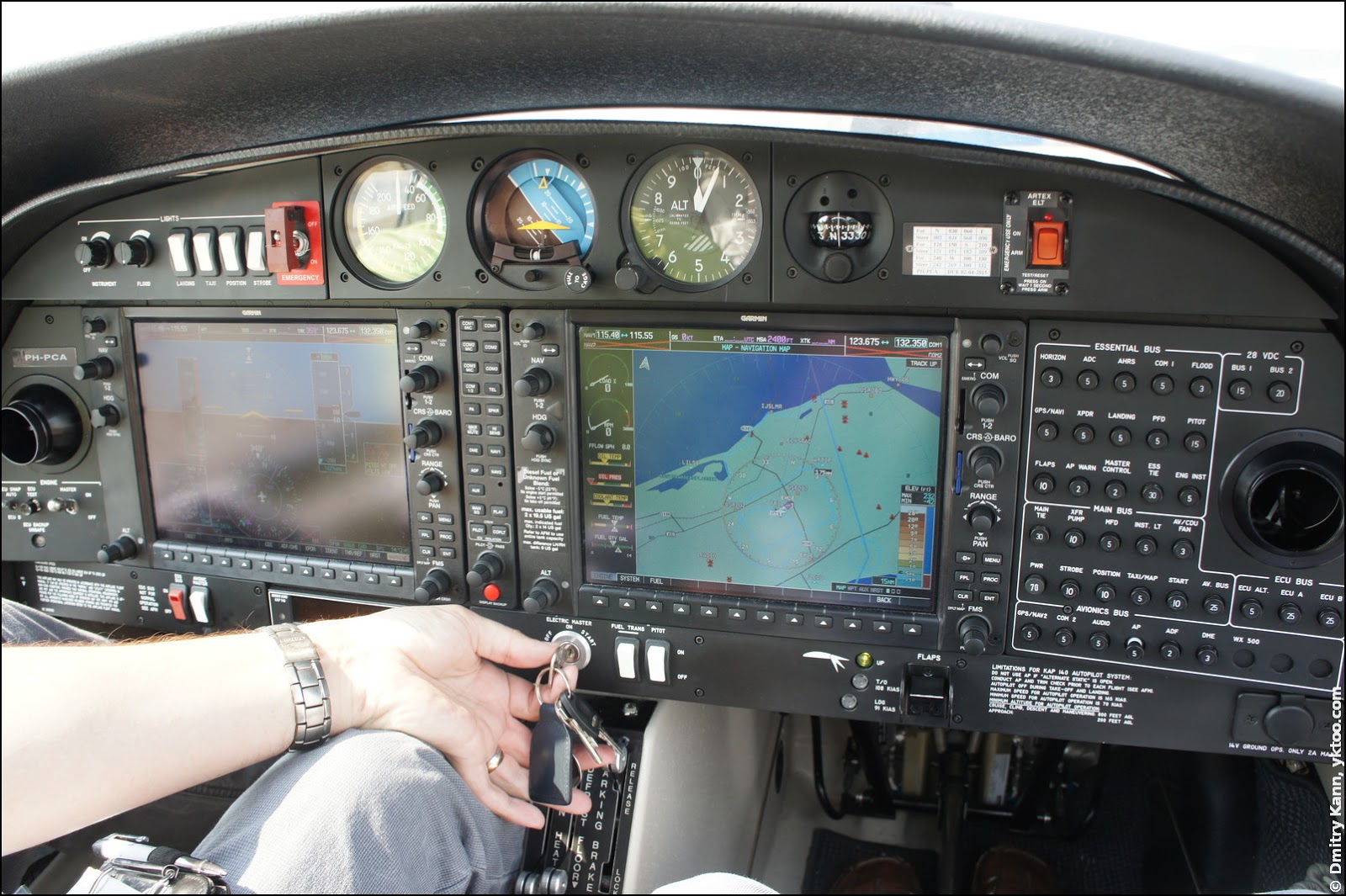
The noise the engine is producing is deafening, therefore the crew uses special noise cancelling headsets. The microphone is voice activated, but it has to be very close to your lips and you have to speak loud. Everyone in the cockpit can hear each other via the headset, and all the communications are recorded onto a memory card. To send a message over the radio, one has to use the PTT (push-to-talk) button on the joystick.

Once the check-list is clear, the pilot requests a permission to take off and steers the aircraft onto the runway.
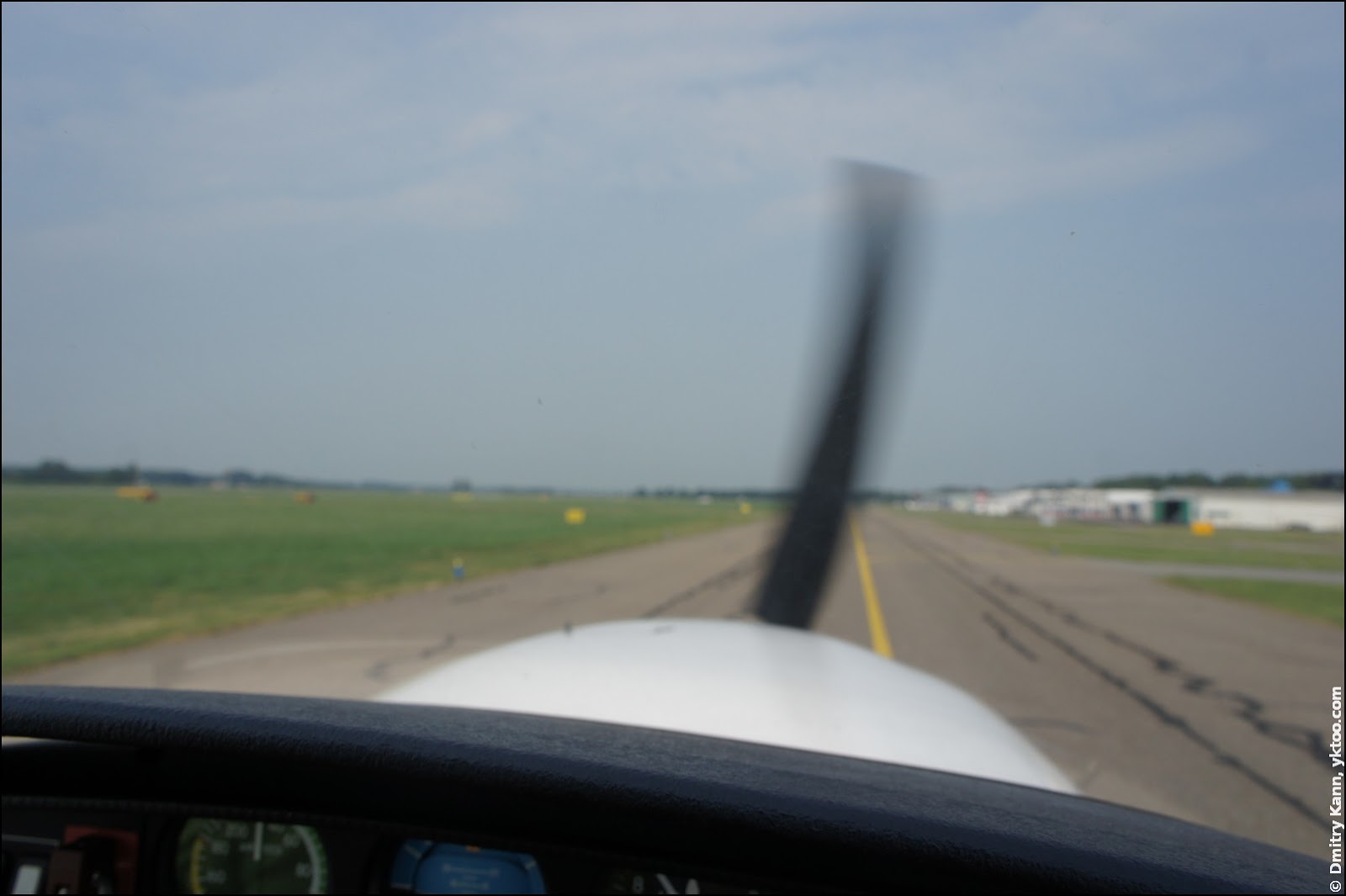
Meanwhile, a private jet Embraer Phenom 100 arrives at the runway. It’s kind of pricey, a new one costs some four million euros:

We’re taking off and then flying! The cockpit has a funny little door, but don’t stick your hand through it, at the speed of 300 km/h it can give you a very unpleasant experience.
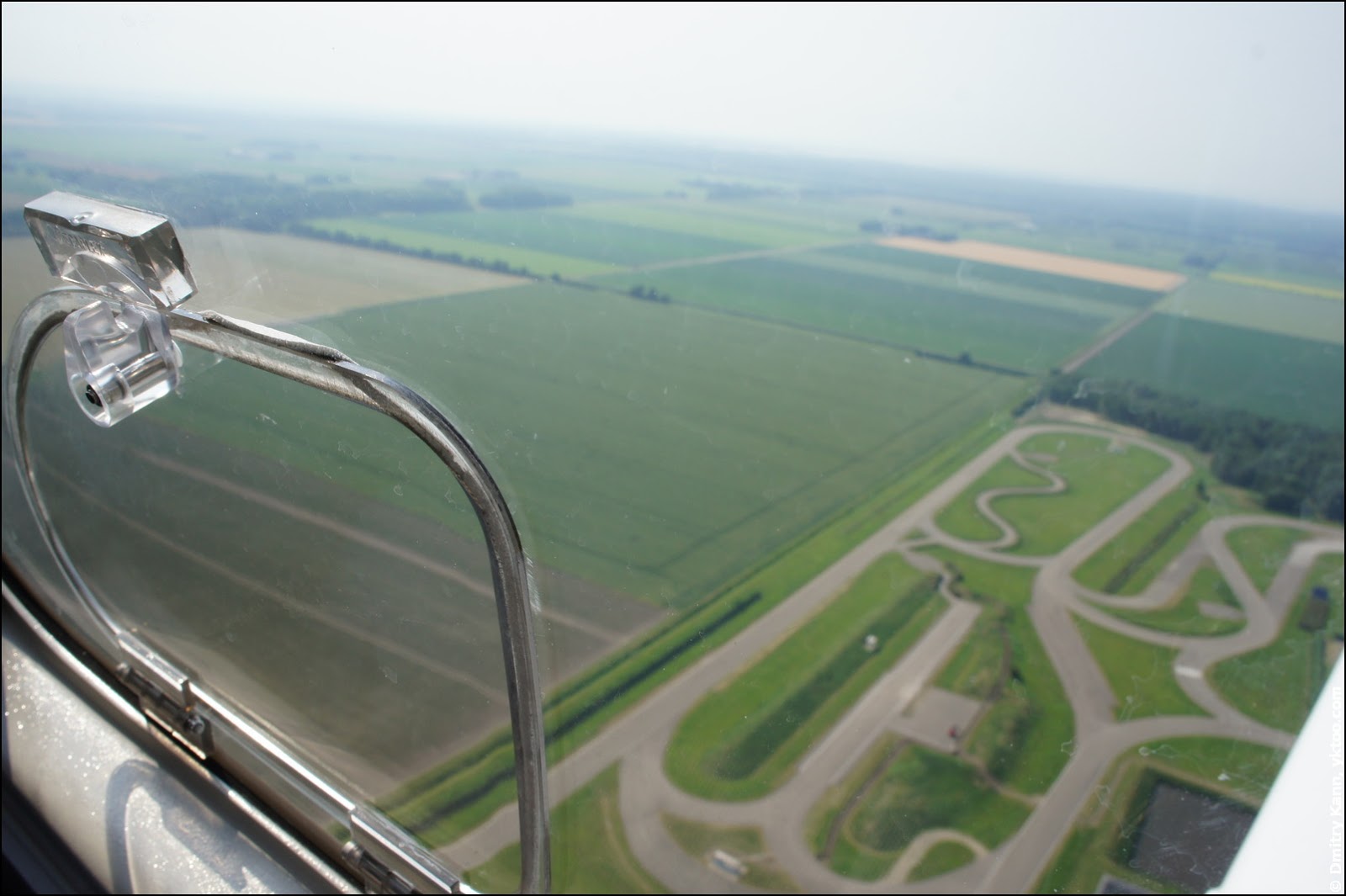
That day was extremely hot for Holland, 34° C, which feels even hotter because of high humidity. The sauna effect is aggravated by the class cover of the cockpit. DA40 has no air conditioning, only ventilation (and heating). Not much you can do about it, but at altitude of 6000 ft the temperature settles at pleasant twenty degrees Celsius.
From the front seats the dashboard obscures the most view forward. All you can do is look to the sides.

The lowest allowed altitude here is some 200 ft (60 m). Below that mark you risk hitting something, like a wind turbine.

We’re heading east, our pilot wants to land in Nordhorn, Germany and have a dinner in a restaurant there.

The distance to Nordhorn is some 100 km, which means a half an hour flight.
After the ascent the engine is put into the cruise mode by a lever between the front seats, which changes the propeller’s pitch. I’m sitting in the co-pilot’s chair on the right and allowed to steer for a while. Both front seats have synchronised controls: pedals and the joystick, the displays can also be set up independently. There are also a wind speed meter, an AI and an altimeter above the displays.

The altimeter derives its readings from the air pressure, therefore it has to be recalibrated every now and then. It’s usually done based on the ground air pressure reported by the air traffic control.
Steering an aeroplane is very easy: you push and pull the joystick to make it dive and climb, and tilt it to make it turn. The control is very sensitive, so you have to be gentle with it. The first pilot can take over at any moment.
In the navigation mode the screen displays the route and the direction (heading, HDG). It also shows lots of blue circles and rectangles, which mean closed or restricted areas. The latter can be flown over after obtaining a permission from the air traffic control (ATC).

On the left hand side the screen displays lots of nitty-gritty details: temperature readings for oil, coolant and fuel, fuel levels for the left and the right wings. The engine is fed from the left one, so the pilot has to pump it there from the right one periodically. So many little things to know about!
Because of the glass and the obscured view, it was difficult to make good photos.

The other side of the German border is pretty much the same: all same-looking patches of grass-fields with occasional houses.

The weather in Nordhorn was even worse: 37° C in the shade and a clear blue sky. The runway here is only 900 m long, and almost runs into the trees at its western end.

On the other hand, it’s a perfect time for the huge solar farm nearby.

The traffic control service is represented by a single person here, and he didn’t seem to be very busy.

Unfortunately the dinner was off as the restaurant turned out to be closed. We were offered a coffee by the ATC guy and then prepared to fly back. In the forty minutes we’d spent there the sun turned the cockpit into a kind of oven.
As the runway is very short and the forest is close, we had to take a very short run-up. The engine is set to the full thrust while keeping the aircraft still with the brake, after which we take off sharply.

At one moment during the ascent the engine temperature alarm went off. The engine got a bit overheated, and as soon as we slowed our ascent, the alarm stopped.
On our way back I was sitting in the back seat, which gives much more legroom and a better view.

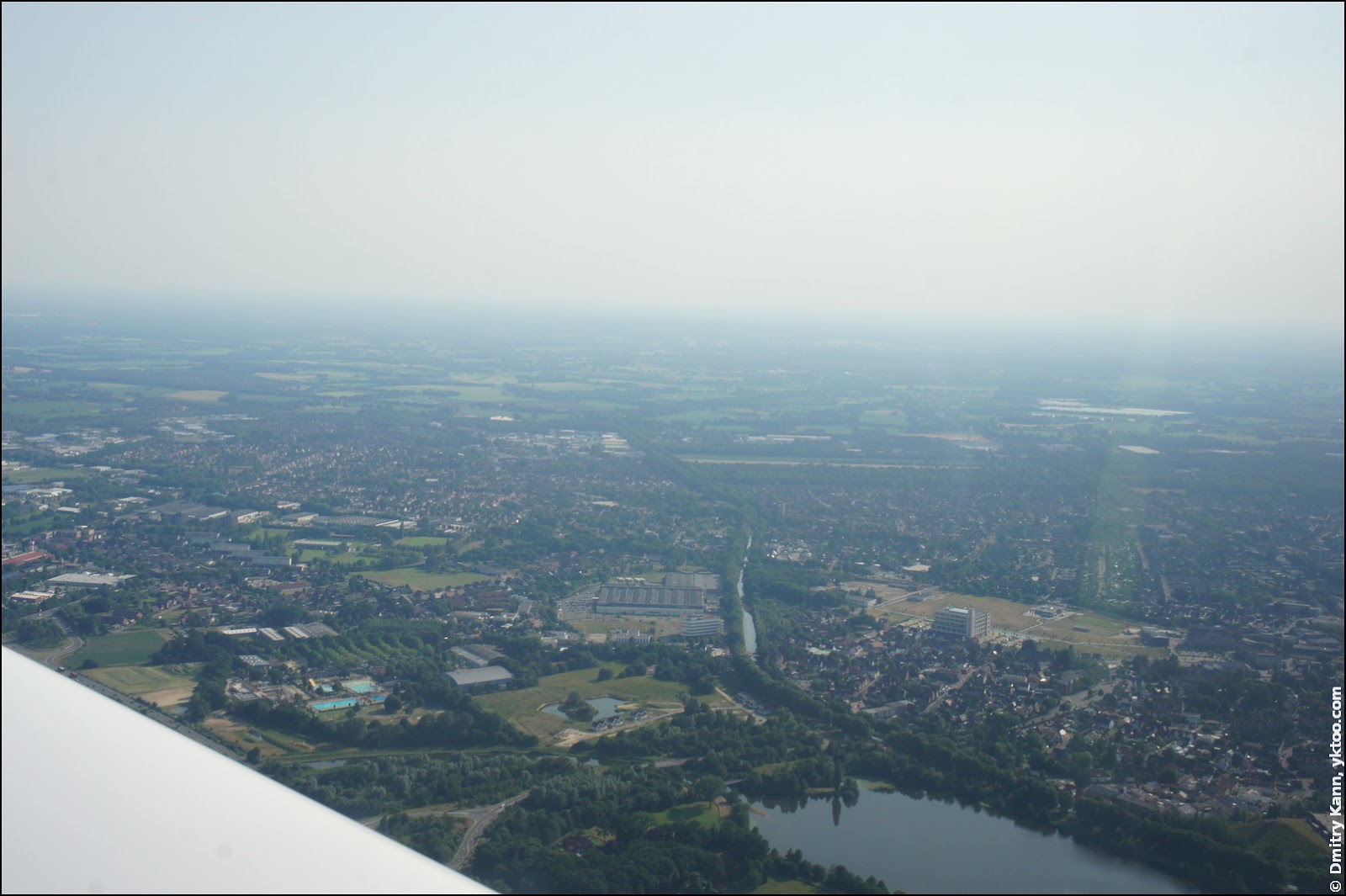

Passing Apeldoorn and the Het Loo Palace below, famous for its garden:
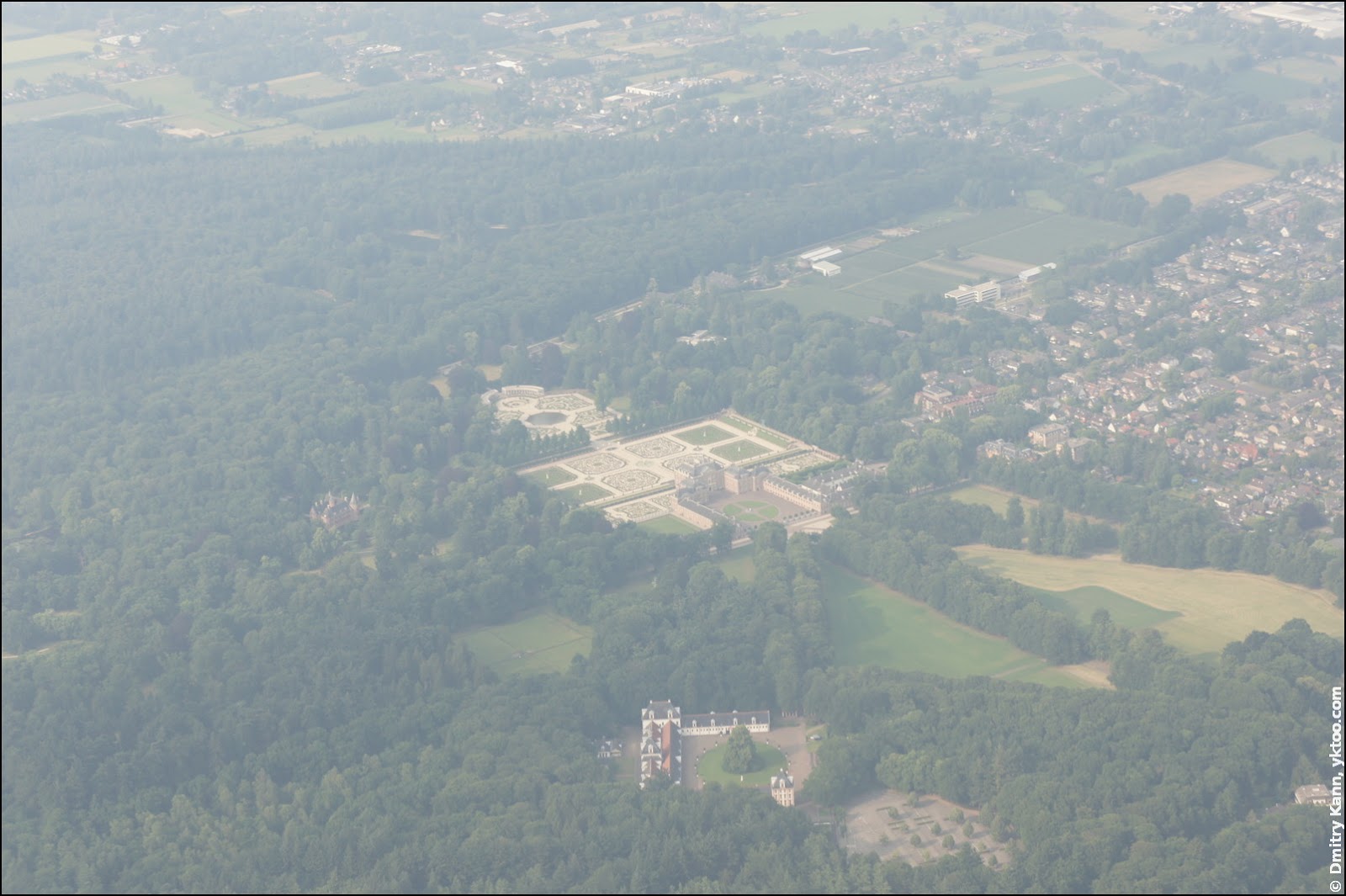
Amersfoort Central Station (top left corner):

We had to land with a strong side wind, but the pilot managed it very well. The heat was over and a thunderstorm approaching—we were just in time.
Rolling the aircrafts back into the hangar:

There are dozens of hangars like this in the area around the airport, which probably means hundreds of aeroplanes. Interestingly enough, one doesn’t have to get any permissions for a fly route, you simply take of and fly wherever you want to. The only thing to keep in mind is the altitude.
And, of course, a pilot licence, which would cost you some ten thousand euros and a year of trainings. ■
 — world’s fastest URL shortener
— world’s fastest URL shortener
Comments